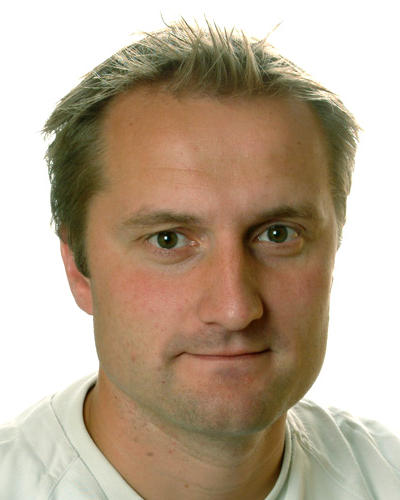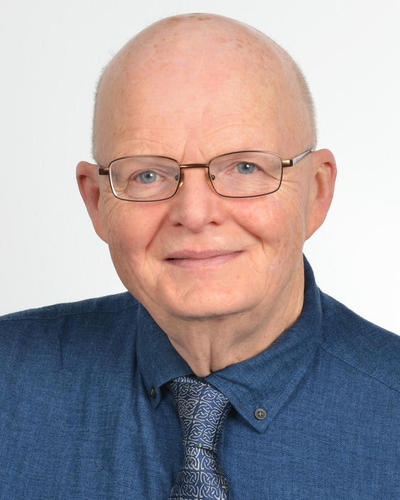Ongoing projects Clinical Dental Biomaterials

Main content
High strength ceramics

Figure. A four-unit zirconia restoration as milled by CAD/CAM
Theoretically, the high strength ceramics, such as zirconia, used for dental crowns and bridges should be unbreakable by human mastication forces, yet in clinical use, fractures occur more often than we like. By meticulously analyzing retrieved failed dental restorations by methods commonly used in mechanical engineering, we have gained increased understanding of how and why failures occur. We have now achieved a relatively large compilation of retrieved restorations of many different materials and restoration types that has been analyzed. The understanding we have achieved from these analyses has been transferred to in vitro testing. We have systematically, over many years, developed more clinically relevant test methods that better mimic the complex clinical situation in the oral cavity for both crowns and fixed partial dentures (FDPs). The new methods have helped to predict clinical performance of dental materials and to assess the effect of different variables in vitro prior to clinical applications. These methods can be applied to other biomaterials as well where fractures are a clinical problem like for instance orthopedics.

Figure. A clinically relevant approach at testing multi-unit zirconia restorations.
Orthodontic materials

After bracket bonding
Orthodontic treatment involving fixed appliances ("braces") is common in children and adolescents. The bracket, made of metals or ceramics, are needed to apply approprierte forces in order to obtain tooth movvements. Polymer-based adhesive materials are used to affix the brackets
The orthodontic appliances typically remain in the mouth for around 1.5 to 2 years in patients typically aged 10-14 years. Thus, it is of interest to investigate to what degree the use of bonded brackets represent exposure of chemical substances, both metal and organic constituents from the polymeric materials.
Two ongoing projects address the exposure scenorios based on saliva samples from patients at the start of orthodontic treatment:
One projects is about quantification of metals (e.g. Ni, Cr, Ti, Co) in saliva. The analyses are done by ICP-MS.
The other projects, including the same patients, is on detection and quantification of monomeric constituents that could be present in the adhesive paste and associated bonding materials. The analyses are done in cooperation with Nordic Institute of Dental Materials (NIOM). The analytical techniques used are GC/MS and LC/MS.

Orthodontic bracket with adhesive (pink) ready to be placed on the tooth, and light-cured.
The use of restorative materials in general practice

In a dental practice
Dental materials are the most common biomaterial used in humans. Almost all people need some type of dental material during their lifetime. The clinical survival time of dental restorations varies depending on the clinical situation, material quality and handling. The cost in time and resources for the individual and the society for the repair and replacement of defect restoration is high. Each replacement treatment will reduce the prognosis of the affected tooth. It is therefore of the outmost importance to evaluate and improve the materials and techniques we use today. We need to learn more about the factors that affect the clinical survival, performance, cost/benefit, and safety of different restorative procedures. A national register of dental interventions would have been beneficial, including both private and public dental health services.
Survey of procedures for dental restoration in general practice: Little is kown about the actual use and selection of materials for direct dental fillings in general practice in Norway (and most other coutries). Researchers and other clinical personnel have been instrumental in courses for dentists across the country (The Systematic Continuing Education at the Norwegian Dental Association https://www.tannlegeforeningen.no/kurs-og-etterutdanning/tse.html). As a part of the course participabts report on the type of filling, diagnoses, type of restoration and also the type and age of replaced filleing, if relevant. Each dentist recorded anonymous data on consecutive treatments over a period of one week. The data has been presented for the participants at each course as a basis for discussion. The courses, which started in 2015 have now (2023) covered 14 regions in Norway so far. The compiled data collected will provide information on trends in restorative procedures over the time period.

A premolar prepared to receive a polymer-based filling material which will be adhesively bonded to the tooth.
Failure analysis of ceramic restoration

The use of all-ceramic restorations has increased tremendously in the last decades. There are many different materials available with different indications and limitations, ranging from the very weak porcelains to the high-strength zirconias that are used as a substitute for metals. The main clinical problem with all-ceramic restorations is fractures. The stiff and brittle nature of the material is a drawback compared to the traditional metal alloys. Tested in vitro the materials apparently have sufficient strength to withstand mastication forces, but even zirconia which has superior strength compared to other dental ceramics, fractures occur from time to time in clinical used. It is of importance to understand the limitations better to reduce the fracture rates.
We have managed to retrieve a large compilation of restoration that has fractured in clinical use, both single crowns and larger multi-unit restorations. The fractogrphic analyses reveal fracture patterns that differ significantly from fractures provoked by traditional in vitro tests.

Figure. A fractographic map of an implant-based restoration revealing the fracture origin (open white arrow) and the crack propagation through the restoration (white arrows).
Dental Biomaterials Adverse Reactions
The Dental Biomaterials Adverse Reactions Unit is organized under NORCE (Norwegian Research Centre) and collaborates with the Biomaterials cluster.
The main tasks of the group are
(i) investigation of referred patients
(ii) information and research on side effects related to dental biomaterials and
(iii) registration and monitoring of Adverse Reaction reports submitted to the group
The staff consists of a leader (professor), three dentists (two full-time and one part-time) and a physician (specialist in general medicine; part-time). An advisory board with representatives from the fields of medicine and dentistry is attached to the group.
The group is located together with the Department of Clinical Dentistry at the University of Bergen, Norway.
The Dental Biomaterials Adverse Reaction collaborates with various academic institutions (e.g. Department of Clinical Dentistry at the Faculty of Medicine, University of Bergen, Haukeland University Hospital, and Nordic Institute of Dental Materials AS)
Link to web-pages: https://bivirkningsgruppen.norceresearch.no/informasjon-og-forskning
Leader Professor Lars Björkman, Trine Lise Lundekvam-PhD Researcher, Birgitte Fos Lundekvam-Medical Doctor, Anita Bergstø-DDS Specialist



